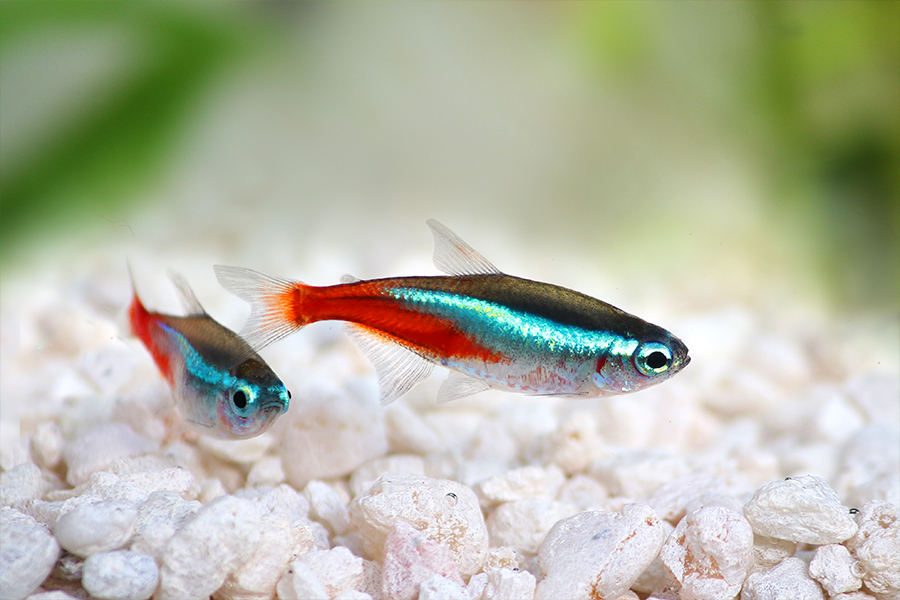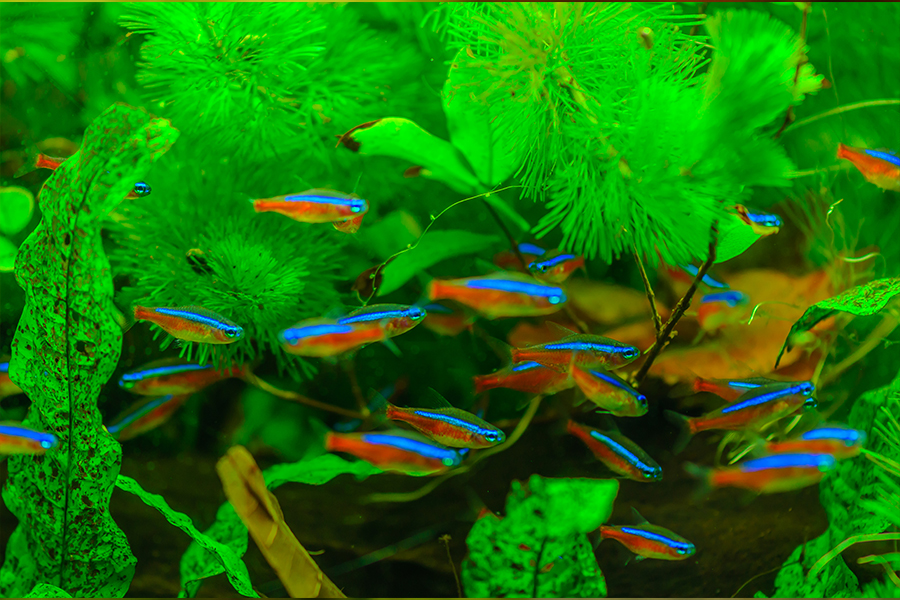Defining the concept of ‘health’ can be very tricky, generally, animals are considered ‘healthy’ if they are free from disease, however, disease is itself defined as a state of ill health! These circular definitions can lead to confusion so perhaps a closer look at the causes of ill health in fish may help to hone any definition of health
Causes of disease in fish can be categorised into 5 major groups, firstly, environmental causes; what fishkeepers would call ‘water quality’ problems. All fish have environmental requirements, they have a water temperature, pH and hardness range they prefer, and differing tolerances for various natural and exotic pollutants. If the environmental requirements are not met or pollution tolerances are exceeded, then disease occurs.
The second type of disease is due to pathogens, infectious agents that can spread from fish to fish. Some are obligate pathogens that can only survive if there are susceptible fish around to infect, others are opportunistic, feeding happily on organic material in the water but switching to a pathogenic phase if the fish become susceptible. The link between environment and pathogen here is very intimate, fish that are weakened by adverse environmental conditions will become much more susceptible to these pathogens. Thus the aquarist who is battling ammonia and nitrite levels in his fish tank will soon encounter pathogenic disease such as the dreaded white spot parasite, Ichtyopthirius multifilis.
Diseases of environmental origin are without doubt the most commonly encountered by aquatic professionals and hobbyists alike. Pathogenic disease often arises as a consequence; other causes of disease can be much more esoteric and less regularly encountered. An awareness is still vital to anyone with an interest in fish health and welfare.
Many diseases can have their root in malnutrition, fish can be fed incorrect levels of proteins, fats or carbohydrates, but more commonly it is an imbalance of micronutrients such as vitamins and minerals that lie at the heart of the problem. The most commonly cited example is a deficiency of ascorbic acid – vitamin C, this antioxidant agent is vital for many biological functions not least collagen manufacture and many elements of immune system function. Fish show repeatable symptoms of deficiency if not enough is provided in the diet. Ensuring enough of this vitamin reaches the fish is complicated by the water soluble nature of the vitamin and its inherent instability in dry fish foods. Food manufacturers therefore add stabilised forms of vitamin at elevated levels to ensure the required amount reaches the fish. Avoiding food past it’s sell by date is a reliable way to avoid vitamin C deficiency in fish.
Disease can also have its root at the genetic level; genes are sequences of the genetic material that code for specific proteins, these then form the builders and building blocks of the fish. Just as typographical errors can be made in a sentence, errors in the sequence of base chemicals in the genetic code lead to mistakes in the protein produced. These mutations are often harmless causing no visible or physiological effect in the fish; occasionally the error has a consequence. This can lead to disease in should this alteration of essential protein structure mean it is no longer be able to perform its role in the complex body system of the fish. We should also remember though that it is this mutation that gives us the infinite variety of life.

As more research into fish behaviour and welfare is conducted, it is becoming more apparent that the psychological well being of the fish is just as crucial as good water quality, diet, genetics and the absence of pathogens. Aquarists have known for years that behaviour is a key player in fish health, fish stressed by aggressive attention from a socially dominant tankmate or breeding partner soon succumb to infectious disease. Even too much attention from humans (banging on the glass!), can weaken timid fish. However psychological well being extends much further than the fish not being bullied or scared. ‘Environmental enrichment’ is a hot topic among many animal husbandry professionals; this can be defined as the provision of environmental stimuli to encourage physical and mental activity. Examples of environmental enrichment in the ornamental fish world include target training Archer fish (Toxotes jaculatrix) or puzzle solving for a food reward in Common Octopus (Octopus vulgaris), more recently a goldfish training kit has become available to buy on the internet!
At a much more simple level the provision of décor to offer cover, gravel or sand for benthic species, flow for riverine species or the correct spawning substrate would also be considered environmental enrichment, because these make the habitat more conducive to allowing the fish complete its natural behavioural repertoire. It is only through cutting edge welfare research involving monitoring stress markers such as catecholamine and corticosteroid hormones and endogenous opiods (natural pain relief chemicals), that the importance of the fish’s psychological well being will become apparent.
So let’s return to our original definition of ‘health’ as an absence of disease. Disease symptoms are caused when the fish’s environmental requirements are not met, when pathogens infect, when the diet is incorrect, from a genetic origin or when the fish’s psychological needs are not met. Thus when appraising the health of our fish we must consider all of these factors.

